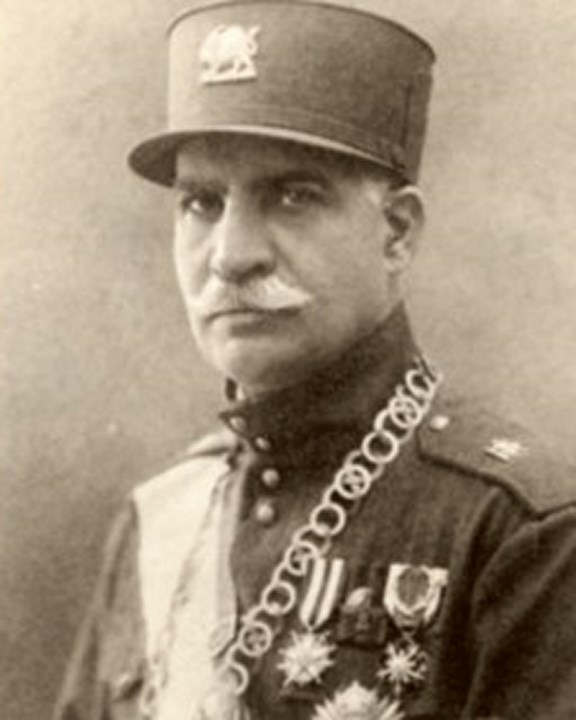 |
| Shah Reza Khan |
At the end of World War I, Iran was in desperate straits. The authority of the central government had broken down, and the country faced national bankruptcy in addition to famine in some regions. In 1919 the majlis (parliament) declined a British offer of financial and military assistance, and British support personnel left the country.
Reza Khan, the commanding officer of the Persian Cossack Brigade, along with newspaper editor and political writer Sayyid Zia Tabatabai, stepped into the void and seized power in a February 1921 coup d'état. Sayyid Zia Tabatabai became premier, and Reza Khan became commander of the armed forces. On February 26, the new government signed a treaty of friendship with the Soviet Union.
Reza Khan was the true power in the new government. Within three months he had ousted Tabatabai, who went into exile. Two years later, in October 1923, with the support of loyal army forces, Reza Khan became premier, and Shah Ahmad Mirza, the last shah of the Qajar dynasty, left the country never to return.
  |
In October 1925, the majlis formally deposed Ahmad Shah, and in December Reza Khan was proclaimed the new sovereign. In an attempt to tie the new monarchy to ancient Persian history, Reza Khan took the name Pahlavi for his dynasty. He then embarked on an ambitious program of modernization.
During his reign, Reza Shah enacted educational and judicial reforms that eroded the role and influence of the mullahs (Shi'i clergy), and the clerics gradually lost their preeminence in education, judicial administration, and document registration.
The clergy opposed these and other reforms and often openly clashed with the new regime. In a push for national unification, Reza Shah banned traditional and ethnic forms of dress in favor of Western clothing. He opened the nation's schools and its first university in Tehran to women. Women were officially freed from wearing the veil in 1936, and divorce laws were also changed in their favor.
Reza Shah established an authoritarian system, suppressing political parties and restricting the press. Rebellious tribal leaders were either imprisoned or put to death. Several of Reza Shah's ministers and other prominent Iranian critics of the regime also died under suspicious circumstances.
On the other hand, Reza Shah implemented many reforms that benefited the nation. He established a national bank in 1927 and improved the tax collection process. He also transformed Iran's bureaucracy into a Western-style civil service of 90,000 people and extended the reach of the national government through reorganized ministries and administrative divisions.
He instituted a form of state socialism to build a modern infrastructure. New civil, penal, and commercial codes were introduced. In 1933 Reza Khan also gained improved terms on the oil concession granted to British companies earlier in the 20th century.
External rather than internal events ended Reza Shah's reign. Fearing both increased Soviet and British influences in Iran, Reza Shah turned to Nazi Germany. After Adolf Hitler invaded the Soviet Union in 1941, Iran's neutrality was jeopardized as the Allies sought safe, overland passage through Iran for delivery of U.S. supplies to the Soviet front.
They also wanted to ensure that Germany did not gain access to vital Iranian oil supplies. When it became evident that the shah would not cooperate, Soviet and British troops invaded Iran in August 1941. In September Reza Shah was forced to abdicate in favor of his eldest son, Mohammed Reza; he went into exile first to Mauritius and then to South Africa. He died in Johannesburg on July 26, 1994.